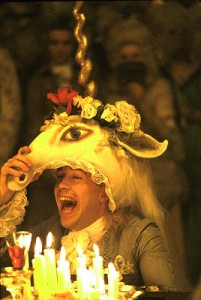“How Do I Write A Great Character?”
“I don’t write screenplay character biographies beforehand. I usually go in knowing some sequences: this is where I want to start, this is where I want to end.”— John Sayles
“Character arcs always seem to be a big issue with film studio executives . . . so the inevitable questions were posed: What was her emotional journey? How does she change? Is she a rich little snob who learns to embrace the less fortunate when she becomes penniless or is she a racist who becomes more liberal when she . . . yawn yawn.”–Elizabeth Chandler
One of the highest compliments any writer can hear is: “Your movie brought back memories of my brother. He died last year….” Or, “Your movie meant so much to me. My mother was the same way…”
Strike a chord in people. Write something that resonates. Synthesize what resonates with you, personally, into something that resonates for an audience as universal. This is—as the Bard once said—the crux of the biscuit.
Sounds crazy, but this is exactly where great characters are found, very near to this proverbial biscuit. Why?
Consider this: In all moviedom, there are only three types of characters:
1) Characters that exist in the real world.
2) Characters that are wholly invented.
3) Characters that are a combination of 1 or 2.
As the writer, you are God. You decide every breath every character in your movie will take. Characters based strictly on people you know in the real world can sometimes turn sentimental, can lose perspective. Then again, if you base them entirely on fiction, they may be stiff, lack real-life passion, dialogue, or humor.
My choice is Column 3. The Frankenstein monster of part creation, part reality.
Often times what happens in real life cannot be believed, let alone invented. Ever see anyone eat baby back ribs like Uncle Rocky? How about your pal Mickey who works graveyard shift at the porno bookstore and feeds you dialogue no human being has ever uttered before. Grab a pen, write down every word Mickey says because…
It’s Life: Use it all.
Sunday afternoon on line at Target. 2 A.M. Saturday on the Chicago Transit Authority Blue Line. You hear someone say something and it’s good. Grab a pen, get it down on paper. Assuming it’s not a passage from a published novel, if you hear it and get it down, you just wrote it.
Someone at the Post Office looks exactly like the antagonist you imagined in your story? Grab a pen; write down every detail of his look; the way he moves, even what he says. Stranger than fiction, you cannot make up what the real world offers.
More to follow. In the meantime, here’s a couple characters that stick with me, a bit more fiction than non, but seriously real…





